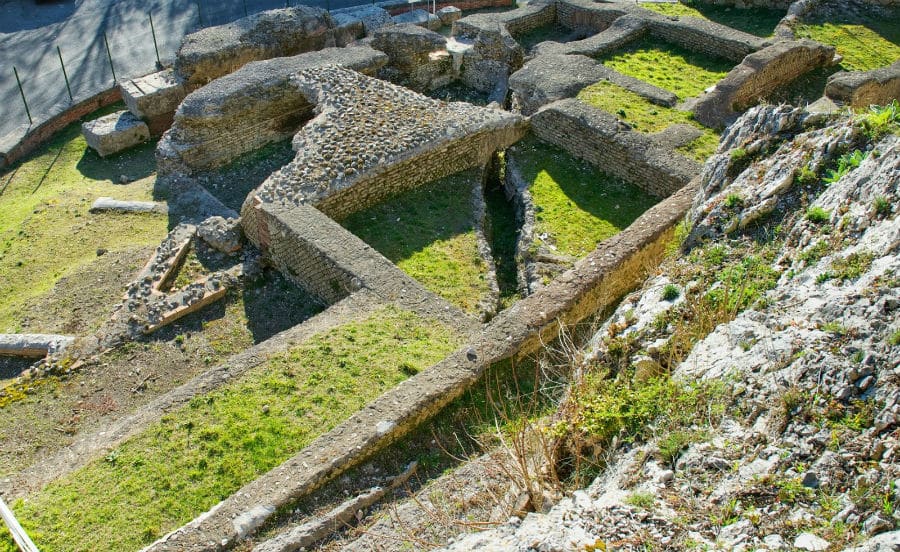Simbruina stagna, the Villa of Nerone, was found in the point where the river Aniene leaves the narrow gorge of Simbruini flanked on both sides by mountains Taleo and Francolano. The ruins of the villa are still visible on the sides of the track Subiaco, between the locality Sorricella and the monastery of Santa Scolastica.
Roman historian Tacitus recalls that while Nero banchettando was in his villa at Subiaco lightning fell and struck the canteen, by fracturing. This event occurred in 60 d. C.: this means that in that year a large part of the villa was already completed. Originally the complex extended on a surface of about 75 hectares and is divided into separate nuclei, arranged at various levels around the three lakes, joined by the so-called Pons Marmoreus mentioned in medieval sources.
The villa, original as structure, consisted of a series of separate cores arranged perhaps with symmetrical correspondence along the shores of the lakes created artificially by means of three dams, two of which have been identified with a certain degree of security, the first al Ponte San Mauro and the other at the paper mill. A fundamental role was represented by the presence of water which allowed you to make sure scenographic effects to be inserted in a context of landscape remained still largely unchanged. This type of architectural research adapts well to taste neroniano, as demonstrated by the same residence in Rome of this emperor, the famous Domus Aurea.
info@subiacoturismo.it



